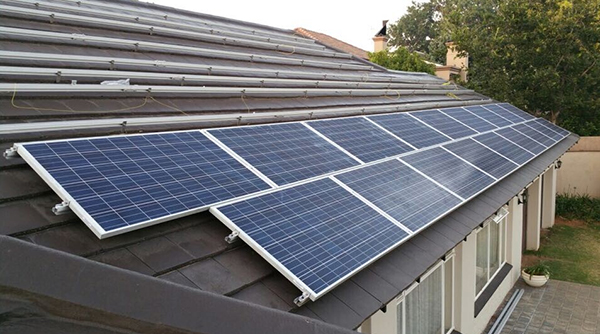Inverter is a device that can convert DC (direct current, such as storage battery) into AC (alternating current/mains), which is widely used in air conditioners, computers, lighting and other electrical appliances. Especially on traveling or working, inverter can generate alternating current by being connected with batteries, so as to supply power for the instruments or electrical appliances requiring alternating current for use.
It is very easy to change alternating current (AC) into direct current (DC), and with only a diode, the simplest rectifier circuit can be formed. However, it is not that simple to change direct current to alternating current. The magnitude and direction of alternating current will change periodically over time. The mains power we use shows regular changes of sine function.
As a critical component of the entire solar PV power generation system, the solar inverter is a power electronic circuit that converts the direct current emitted by the solar array into the alternating current to power the AC load. The solar inverter has two primary functions: Firstly, to provide electricity for the AC load to complete the DC/AC conversion. Secondly, to find the optimal workplace to optimize the solar PV system's efficiency. The solar PV system works with an optimal voltage and current at specific solar radiation, temperature, and the solar cell to generate electricity at the maximum power. Therefore, when selecting a solar inverter for PV power generation system, it should meet the following 6 features: reasonable circuit structure, a wide range of DC input voltag, high efficiency, high reliability, pure sine wave and high overload capacity.
A sine wave inverter is a kind of common inverter. Sine wave inverter is a power electronic device that can convert DC (direct current) electric energy (such as power batteries, storage batteries) into AC (alternating current). The sine wave inverter outputs pure sine wave current, it is compared with a modified wave inverter. Inverter and AC-DC converter are opposite processes. AC-DC converters or power adapters rectify will convert current into direct current, while inverters will have the opposite effect. So it is get the name.
As we all know, there are two kinds of electricity: one is direct current (DC), such as electricity from batteries and mobile phone chargers, and its waveform is a straight line; the other is alternating current (AC), which is 220V/110V for household use. The alternate means that its amplitude is periodic, with positive and negative changes. Sine wave is like a wave, rising and falling. Generally, the waveform of alternating current changes according to a sine function, so it is called a sine wave. The function of the sine wave inverter is to convert direct current (linear) into alternating current (sine wave).
With advances in solar photovoltaic technology, many technical terms, in addition to solar power generation systems, PV sunshine rooms, PV greenhouses, and other civilian projects, have taken a deep root in residents' life. For instance, many purchasers ask questions when buying an inverter, for example, how many circuits of MPPT does this inverter has? What the power-generation efficiency is like? Although many people are aware of the MPPT function, they are unclear about the circuit's working principles. This paper will briefly introduce the DC-DC conversion circuit, a vital component of MPPT.
Power inverter has many specifications, and these specifications usually include rated power and peak power. The rated power is the continuous output power, which refers to the power that the inverter keeps working for a long time. The peak power is the starting power, which is generally twice the rated power. It is mainly used to meet the instantaneous peak value when individual home electrical appliances are started. For example, for a power inverter with 2000 watts continuous power, its peak power can reach 4000 watts. Therefore, for an inverter, its peak power must be able to meet the instantaneous power when the home appliance starts to ensure normal operation. When selecting an inverter, its power should be higher than the starting power of the home electrical appliances used. When working, the inverter itself consumes part of the power. Its input power is greater than its output power. For example, if an inverter inputs 100 watts of direct current and outputs 85 watts of alternating current, its efficiency is 85%.
If in the PV system, the component installation place is distant from the power grid connection place and the distance is over 300m, the solar inverter can be installed at three places. The first place is the place that is most approximate to the grid connection point, which can save the AC cable. The second one is the place that is closest to the component, which can save the DC cable. The third one is the middle place. Which one is the best choice?

Generator is an electromechanical device that generates electricity by transforming mechanical energy into electric energy. It generates electricity based on the electricity and magnetism work rules. It is driven by the wind turbine and hydraulic turbine of the system. The electricity generated by the system is for power station application and industrial application as main AC power.
Inverter is a power electric device that can convert one current into another current. This device is mainly used to transform DC into AC. The inverter takes AC directly from AC source and converts it into the DC by rectifier. The converted DC is used to charge the battery. At the same time, as AC is used in the industrial and household system, the DC from the battery will be converted into AC by the inverter. This system can be used to supply power for household electricity system in case of power failure. The inverter does not need external power to support its work. Although both the inverter and generator can improve the work efficiency, their functions are totally different.

